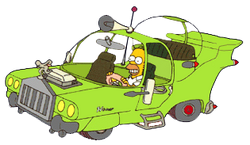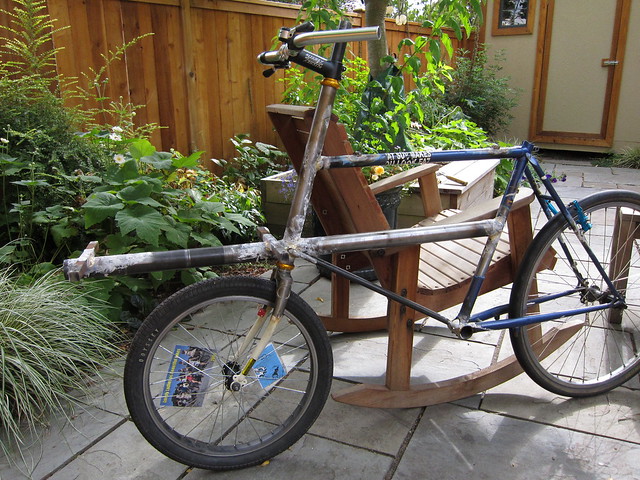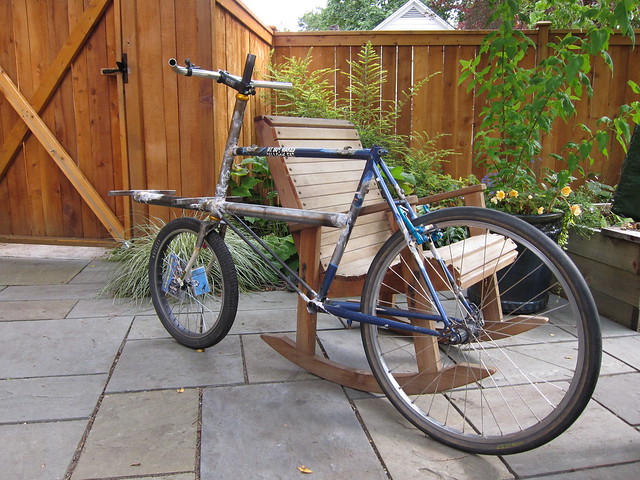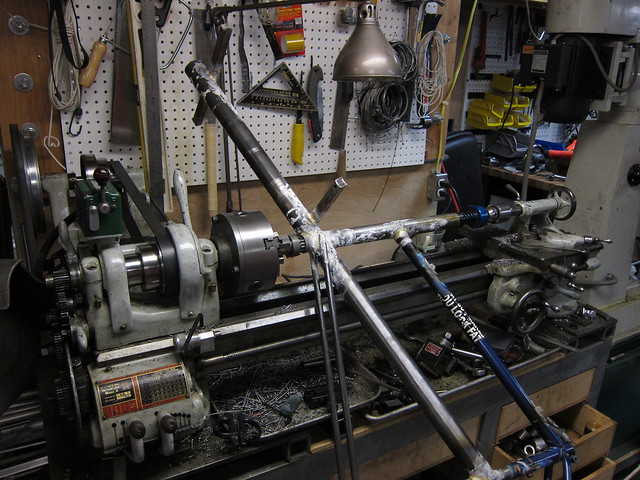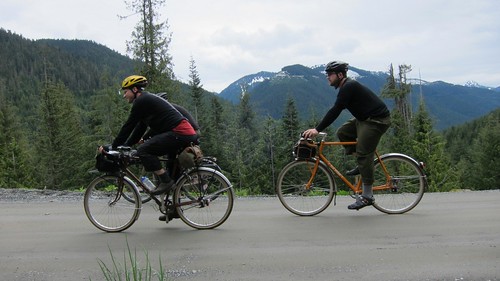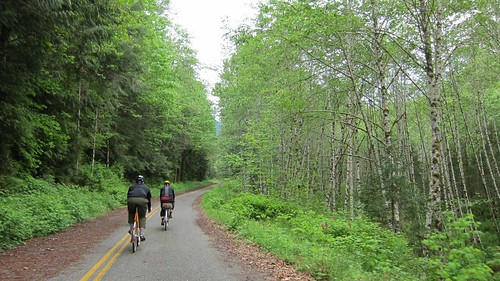Christine and I spent 5 days of our summer vacation kayaking camping in the Broken Group Islands, off of the west coast of Vancouver Island in British Columbia.

The Broken Group is an archipelago of more than 100 small islands inside Barkley Sound. 8 of them have camping, and the camping is only open to paddlers (no motor boats or sailboats). The islands do a good job of buffering the Pacific Ocean, so the paddling is mostly very calm and flat. The whole area is preserved as a national park, so there is a lot of wildlife and little in the way of buildings. At the same time it was once a very vibrant area of villages for the First Nations people of BC, and there are a lot of artifacts to be found from that time.
We used the guidebook Kayaking the Broken Group Islands: The Essential Guidebook to plan our trip. I think everyone that we met there was using this book. It was a good resource and had details about each of the islands and what to look for on them.
On our first day we parked our car at Toquart Bay and took the water taxi from there to Sechart. This saved us an open crossing (one that we’d have to do later in the trip) and let us get a head start into the islands. Sechart is also the only source of fresh water near the Broken Group, and where most people who are renting kayaks start their trip.

On that first day we explored the inner islands that are closer to Sechart. I was really interested in visiting a large lagoon between Jacques and Jarvis Islands. There are four entrances to the lagoon and we came in through one of the largest ones. The lagoon was very calm since it is protected almost all the way around, and we watched the birds and enjoyed checking out the tidepools. On our way out we took a very narrow passage that Christine was convinced didn’t really exist until we had passed through. I love being able to slip through those narrow passages on a kayak.
On our way out we made a decision to go to Dodd or Willis Island for the night instead of Gibraltar. I had planned on avoiding Dodd and Willis because our guidebook said that they were the busiest islands and popular with guided trips. On the other hand they were well located to set us up for a short day getting to Clarke Island (where we wanted to stay for a couple of nights), and the ranger had told us that the islands weren’t too busy. As we paddled past Dodd we thought we saw about10 campers and maybe should check out Willis. While padding the channel between Dodd and Willis we saw our first whale of the trip, what looked like a humpback off in the distance by the north end of Willis. We hurried over to get a second look, but didn’t see it surface again. We found the campsite on Willis and were initially disappointed by the crowds (about 30 people were there, including two large groups),but found a quiet but compact site with our own little patch of the beach. The couple near us was kind enough to share their beach fire too.

This was an important lesson in camping in the Broken Group. The campsites are close together and you don’t really get much privacy there. On the other hand the other people paddling the Broken Group are from all over the world and are full of interesting stories,so by the end of our trip we were enjoying finding other people. Just don’t go to the Broken Group if you want to camp by yourself.
The fog really moved in quickly that night, and by the time we were eating dinner you could barely see a little island just off of the campsite.

The next morning we got up pretty early and made a fast trip paddle down to Clarke Island. I think our favorite part of that paddle also turned into the most frustrating. We were paddling through a small channel between Turret and Trickett Islands that is beach at low tide and has water at high tide. We both really enjoy paddling in 6 inches of clear water and looking down at the intertidal life. Having a white sand beach below really made the sea stars, crabs, and other creatures in this area pop with color. We floated around there for 30 minutes or more. The bad part was that just as we were thinking about heading on I reached into my bag for the binoculars and heard the plop of something else falling into the water. I didn’t think anything was missing, but 20 minutes later discovered that we had lost our VHF emergency radio. I went back and looked all over for it, but it was gone.

We got to Clarke Island pretty early in the day and found a great campsite out on a point. We setup the tent on a grassy bluff above the point, but there was a great shared fire pit down in the sand, and a nice table made up with driftwood right in front of our site. The sun was out so Christine decided to enjoy some sunny beach time and I took my kayak out to the water to paddle around and practice rolling my kayak. A few hours later we took an impromptu paddle around Clarke Island and loved the scenic beaches on the west and south sides of the island. We also saw our second whale of the trip, a humpback that was closer in to us and just north of Clarke Island.
In the evening we shared the campfire with our neighbors and shared a lot of good stories and laughs. A great part about the Broken Group was having a lot of privacy during the day when out on the boat, but getting to know people in the evenings.
We had decided to stay for 2 nights on Clarke Island, which made our next morning very relaxed. Christine slept in, and then we had a leisurely breakfast before heading out on a day paddle. Our goal was to go to Wouwer Island and find the sea lions that we would occasionally hear. I was worried about the crossing over to there because it is a bit more exposed, but the seas were pretty calm and it went quickly. Wouwer did deliver and we found some rocks that were covered in Stellar Sea Lions.


We paddled around to the other side of the island hoping to get into a giant lagoon called “The Great Tidepool”, but the tide was too low and there wasn’t any good access. However we did find this sea lion who was looking calm and happy.
On the paddle back some small Dolphin entertained us during the open water crossing to Benson Island. We stopped thereto collect driftwood for the campfire. Some neighbor’s on Clarke told us that this was a good source of firewood, and they were right. There were plenty of pieces that were small enough to burn safely and dry from sitting high on the beach. That night Clarke Island was quite a bit emptier, with only a few groups camping. We had a large dinner and enjoyed a good fire, while getting to bed early.

We had a long paddle planned for the next day and got up pretty early to get started. We were planning on going to Hand Island, about 8 miles away, and camping there. Hand is always busy because it is the gateway island in and out of the Broken Group (going to Toquart Bay, where we had parked), and most people stay there on their first and last nights. The paddle to Hand mostly covered areas that we had already paddled and went pretty quickly. It was a really foggy day which made it a bit difficult to get motiviated, and we had both made the mistake of skipping breakfast to optimize our use of the tide. We got to Hand around noon, but hungry and ready for a pot of coffee.
Hand was a disappointment. We didn’t really like the campsites and there was a motor boat illegally camping there. During our meal we decided that maybe we should press on and camp at the Stopper Islands instead. After lunch we did enjoy the shallow waters that were full of bat stars and other sea stars just north of Hand Island.

The paddle over to the Stopper Islands goes on another exposed area called the Davis Channel. It was a little rougher during our crossing and there weren’t really any good beaches to pull over and take a break on. We were happy and tired when we got to the Stopper Islands.
On the South Stopper Island we found a very nice couple named Peter and Linda who were having a cup of tea. They invited us to join them and I think it was really a highlight of the trip for both Christine and I. Peter and Linda had lived all over the world (just in the last 10 years they had lived in Greece, England, and BC) and had been living and working on sailboats most of their lives. They recently decided to move to a house and had settled in BC. They sold their sailboat, but couldn’t give up the water, and in retirement were enjoying day paddles in a pair of kayaks. They both had a great sense of humor and tea lasted for a couple of hours of really fine conversation. It was a great way to finish off an otherwise ho-hum day.

The campsite where we had tea was a bit exposed and windy, so we decided to check out the one on the other side of the island. I’m really glad that we did, it was beautiful. There wasa rocky beach (it was nice to get away from the sand for a little bit) and two large clearings in the woods. One had a good firepit, and the other was great for our tent. We setup kitchen near the firepit, ate a feast of a meal, and played a game of hide the food with the resident mouse who was determined (but unsuccessful) to share in our dinner. I think most people pass through the Stopper Islands, but I have to say that it was one of our favorite campsites. Peter and Linda had been exploring this area of the sound quite a bit on their day paddles and had a lot of good things to say. I could see spending more time in this region on a future trip.
We woke up on our final morning to a steady rain. We hadn’t really planned on this the evening prior, but luckily everything important was properly stored and covered. We had another quick morning of loading up the boats and a short 2 mile paddle back to Toquart Bay, where we finished our trip.
Planning: Seatrails makes a great kayaking chart of the area. It shows the distances popular points and it is easier to read than the official chart that the Canadian gov’t publishes. The guidebook listed above was really helpful. One tricky thing is that you need to bring all of your own water, we brought 10 gallons of fresh water but only used about half of that by being careful when doing dishes.
It does take a long time to get there from Seattle, despite being fairly close geographically. Figure 8 hours of driving. We broke it up a bit by staying at a motel in Port Alberni the night before starting our paddling trip.
We spent 4 nights there, and I think that is a good amount of time. On the other hand I could easily see spending 8 nights there and not getting bored. With some of that extra time I’d have explored the Pipestream Inlet and other areas around Toquart Bay.
Regrets: I wish I had taken more photos, especially of the human companions that made our trip so great. I also need to come up with a better system for carrying and using the camera on the kayak.
We stayed for 4 nights in Tofino at the end of our trip, and that was too long. The paddling up there is great, but otherwise it was an expensive touristy beach town. We rented from Tofino Vacation Rentals and I would not rent from them again, our house was poorly equipped and was missing wifi, despite having had advertised that it came with it.

